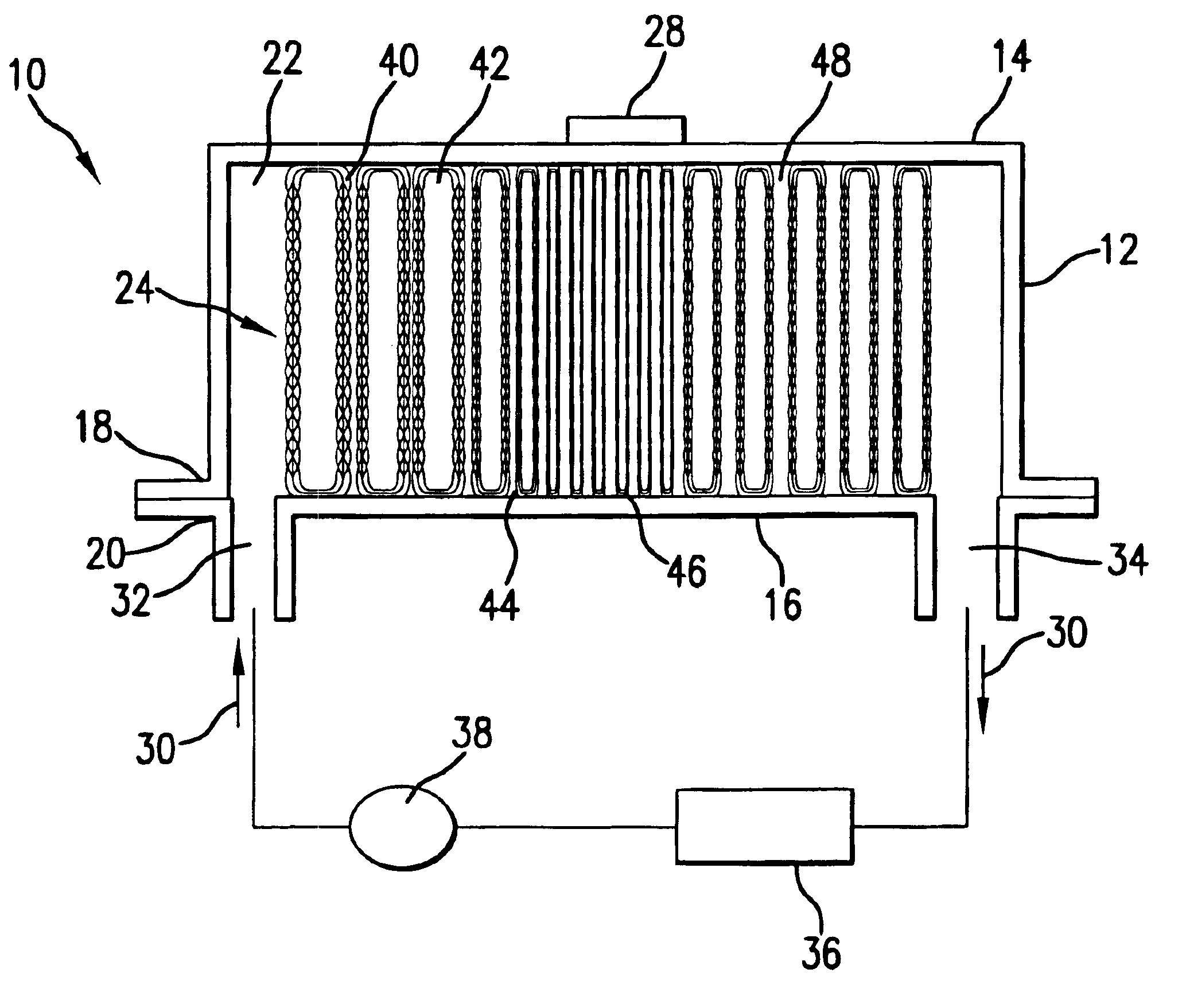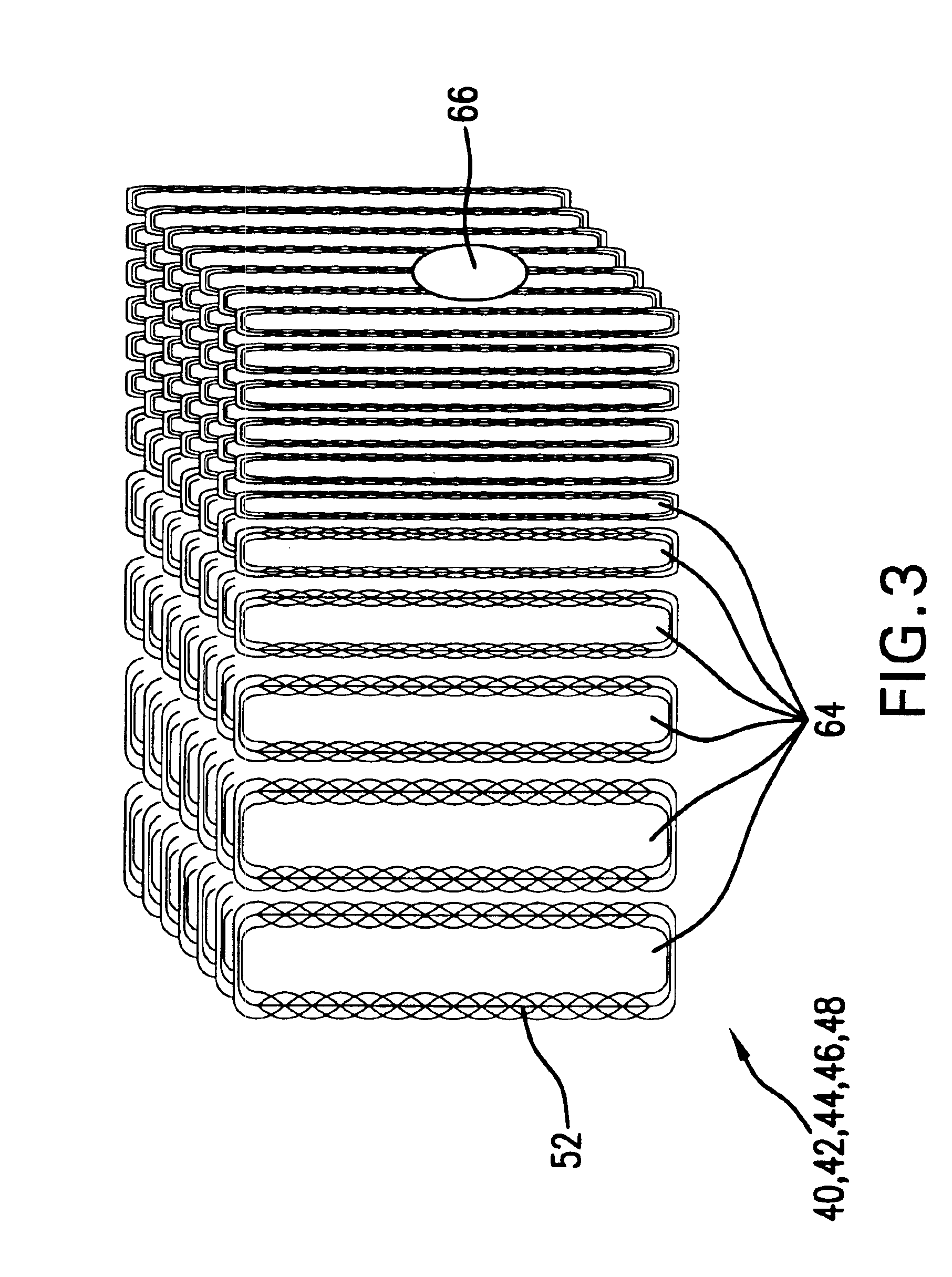Enhanced heat transfer structure with heat transfer members of variable density
a heat transfer structure and variable density technology, applied in indirect heat exchangers, laminated elements, lighting and heating apparatus, etc., can solve the problems of low heat dissipation efficiency of flat fin geometry heat sinks, failure of devices, and limited heat dissipation capabilities of substrates and base plates, and achieve low susceptibility to clogging and high heat transfer efficiency.
- Summary
- Abstract
- Description
- Claims
- Application Information
AI Technical Summary
Benefits of technology
Problems solved by technology
Method used
Image
Examples
Embodiment Construction
[0050]Referring to FIGS. 1 and 2, a heat transfer structure 10 is shown which includes a heat transfer module 12 having module walls 14 and 16 attached or fastened each to the other. For purposes of illustration, fastening of the walls 14 and 16 may be secured at perimeters 18 and 20 thus forming a duct chamber 22 therebetween. A plurality of heat transfer members, for example, in the form of perpendicularly directed pin fins 24 are positioned in the duct chamber 22 and extend between the module walls 14 and 16. Localized heat sources 26 and 28 represent heat generating semiconductor structures which are attached to the module wall 14 and are in thermal contact therewith.
[0051]A coolant media 30 is supplied to the inlet port 32 into the heat transfer module 12 and exits from the outlet port 34 thereof. The entry coolant media ingressing or being charged into the heat transfer module 12 is at a substantially lower temperature than the heat sources 26 and 28. The cooling media absorbs...
PUM
 Login to View More
Login to View More Abstract
Description
Claims
Application Information
 Login to View More
Login to View More - R&D
- Intellectual Property
- Life Sciences
- Materials
- Tech Scout
- Unparalleled Data Quality
- Higher Quality Content
- 60% Fewer Hallucinations
Browse by: Latest US Patents, China's latest patents, Technical Efficacy Thesaurus, Application Domain, Technology Topic, Popular Technical Reports.
© 2025 PatSnap. All rights reserved.Legal|Privacy policy|Modern Slavery Act Transparency Statement|Sitemap|About US| Contact US: help@patsnap.com



